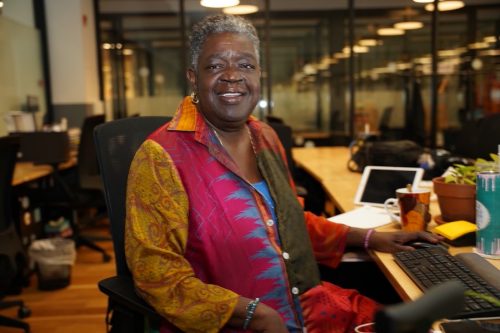
We, as a generation, have seen the transformation of traditional classroom learning to online-based learning.
The pandemic has had a considerable impact on such transformation. And by saying this, we know how video content has made its place in educational and professional development. In today’s age, you might find yourself surrounded by a myriad of resources available in the market. But when it comes to effective learning, video content helps you have a powerful and engaging experience. This means you are more likely to remember what you learn better.
Smartphone usage has been increasing drastically over the past few years. As a result, video recording and sharing tools are becoming easily available. Learners can easily share their experiences and share knowledge with fellow students by creating content online. Such user-generated video content has many benefits that you can’t even imagine. Think about the benefits user-generated content can create when we incorporate it with the digital learning experience. Let’s discuss how to use the power of such content in eLearning.
The Rise of User-Generated Content
If you are familiar with the online world, then user-generated content is not a new concept for you. You must have seen it making a growing impression on social media platforms. The common idea is when users share their experiences, knowledge, and creativity. The same concept has now made its way into eLearning, and for a good reason.
User-generated videos have become popular among student communities. Learners have the opportunity to create videos to explain concepts, demonstrate skills, or present their viewpoints on a subject matter. It creates an effective learning environment that empowers students to become active participants.
Human Connections in Digital Learning
Staring at a screen can get frustrating over time when learning from a digital platform. But when you see a real person talking to you, sharing their knowledge, it creates a connection. You can see their expression and hear their tone of voice, and it feels like a conversation. Rather than bookish knowledge, you get to learn from someone’s experience. Suddenly, learning becomes a dynamic exchange of knowledge and not just a one-sided lecture.
User-generated learning brings a human touch to the digital world. Learners can relate to the faces on the screen, and that makes the content more memorable. You can have a mentor just there with you whenever you need, ready to guide you through the learning process.
Real World Application
One of the biggest challenges in traditional learning is bridging the gap between theory and practice. User-generated content excels at this. You are not just learning from abstract concepts, but you are also learning how they are applied in real-life scenarios.
For instance, if you are learning coding, watching a tutorial video of someone debugging a complex program is far more instructive than reading a theoretical explanation. You see the process, the techniques, and the little tricks that make all the difference.
Learning from Different Perspectives
Every person has a different perspective influenced by their experiences and expertise. That’s what makes them unique. With user-generated content, you get valuable insights into the other person’s viewpoints. This is not limited to a single person but multiple perspectives.
Imagine learning about marketing from an experienced marketer, then switching to a video from a young entrepreneur who cracked the code to viral marketing. They might have different opinions about how marketing works and which formula to apply to be successful in today’s market, but you get a variety of options to think about and learn. The diversity of voices enhances the learning experience and gives you a 360-degree view of the subject matter.
Learning in a Collaborative Environment
User-generated content also encourages peer learning and collaboration. When learners create content, they frequently collaborate with their peers, exchanging knowledge and ideas. This collaborative learning improves knowledge and also creates a sense of community and shared learning opportunities.
Imagine a scenario where a group of students collaboratively publishes an article to explain a complex concept or a case study. Such a collaborative article demonstrates their understanding of the concept and offers different perspectives that can benefit their peers. This peer-to-peer teaching and learning process can be a powerful tool in eLearning.
Engagement and Personalization
One of the most impressive characteristics of user-generated content in eLearning is the level of engagement they provide. When learners are actively involved in creating content, they are more attentive and motivated. It’s their self-expression that encourages them to take charge of their own learning journey.
More importantly, user-generated content adds a personal touch to the learning experience. It allows learners to express themselves in a way that resonates with their individual style and preferences. This personalization can lead to a deeper understanding of the subject matter and better retention of knowledge.
Self-Assessment and Reflection
User-generated content is also beneficial in self-assessment and reflection. When learners create content, they can see their own performance and evaluate their understanding, communication skills, and overall presentation. This process of self-assessment can help them identify areas for improvement and growth.
Apart from this, learners can also receive feedback from their peers and instructors. Constructive criticism and feedback is a valuable tool for personal development. It helps learners refine their skills and knowledge.
Accessibility and Inclusivity
Another advantage of user-generated content is its accessibility and inclusivity. eLearning content is usually designed by instructional designers and educators. On the other hand, user-generated content is created by users or learners, which reflects a broader range of perspectives and experiences. Using such content in eLearning can make it more inclusive and relatable to a diverse audience.
Learners from diverse backgrounds, with different abilities and learning styles, can find content created by their peers more relatable and accessible. This inclusivity encourages a supportive and diverse learning environment.
Final Words
Content is the main component of your learning material, but when you get a personal touch on that content, it enhances your power to retain information better. User-generated content gives you that personal touch. You get to learn from your fellow learners and peers. This process of learning makes it more interesting, relatable, and engaging. Achieving learning goals is no longer a hurdle with user-generated content.
- How To Choose The Right Corporate Travel Management Provider For Your Business?
- How Having A Dog Can Enhance Your Overall Mental Health
- 10 Tips To Maximize Your Air Conditioner’s Efficiency
- New Gear For Fall On The Rise For You And Your Harlem Home
- NYIC Launches ‘New York Proud’ Public Art Campaign Celebrating Immigrant Stories Across NYC
Become a Harlem Insider!
By submitting this form, you are consenting to receive marketing emails from: Harlem World Magazine, 2521 1/2 west 42nd street, Los Angeles, CA, 90008, https://www.harlemworldmagazine.com. You can revoke your consent to receive emails at any time by using the SafeUnsubscribe® link, found at the bottom of every email. Emails are serviced by Constant Contact









